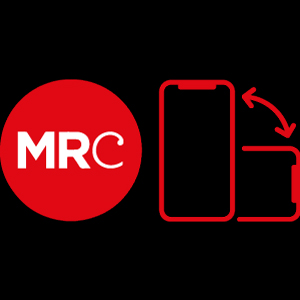This blog is part of a series exploring proposals from our Manifesto for a People’s Media in more depth. Others are on: ensuring independence; new models of accountability; and how new funding could be distributed democratically.
The Manifesto places a strong emphasis on public funding as a major mechanism for creating the media system that we need. It not only advocates continuing a reformed licence fee for the BBC, but also proposes that Channel 4 should be funded through a cross-platform advertising levy, and that a new fund of £1 billion a year should be created to support independent media. At the same time, the Manifesto recognises that taking money from the state can have very negative impacts on independence, as starkly demonstrated at the BBC. Another blog outlining how our proposals would maintain independence with this expansion of public funding is here.
There are some fundamental tensions, however, in our use of the language of the commons. Commons are collective resources, owned and managed by those who rely on them. We talk about needing to create a media commons – an ecology of media institutions, united by shared values and practices, that would become the heart of our media system. Yet commons are usually thought of as spaces outside of the state, where resistance to concentrations of power – including state power – can be built. This blog is about why we still think that public funding remains a necessary part of building a People’s Media fit for the future.
A useful starting point is to look at the range of kinds of public subsidy that currently exist, which are more wide-ranging than many people appreciate. They include:
- the BBC licence fee, which raises around £3.7 billion a year – of which at least £0.5 billion is spent on commissioning programmes from external (private) production houses
- grantmaking bodies like the Arts Council, the Audio Content Fund and the Community Radio Fund
- the VAT exemption for newspapers and magazines, worth £1.4 billion a year, which was recently extended to digital-only news organisations
- government notices (including local government advertising) – amounts can vary but early in the pandemic £35 million was spent on public health notices in local and national newspapers
- research and innovation funding, often channelled through universities, such as the media.cymru consortium which recently secured a £50 million grant
As we can see, there are many media organisations outside of the BBC which are already partly supported by public money, including private companies. So our arguments about public money aren’t out of the bounds of current policies, but we are arguing that public resources should be deployed differently and with far more democratic oversight. For example, the VAT exemption – worth £500 million a year to newspapers alone – is premised on the idea that publishing serves some inherent public good, without any assessment of whether this is actually the case. While making this subsidy content-neutral is meant to safeguard independence, in practice it means significant amounts of public money going to the likes of Rupert Murdoch and the Express, who (among other failings) are still in the process of paying out up to £1 billion in settlements to the victims of phone hacking. No citizen has ever been offered a choice over whether they want to subsidise this kind of illegal activity.
So public funding is not unusual at the moment – and there is also substantial evidence that it is going to become even more important in the future, especially for news. This is first and foremost because of a fundamental shift in the advertising market. As advertising has moved online, the biggest beneficiaries have been the tech platforms who place adverts and take a large chunk of the revenue. As of 2019 – before the pandemic which applied even more pressure – national news organisations were only making 13p online for every £1 they had lost in print advertising since 2001, and local news were only receiving 6p for every £1 they had lost.
While it’s not impossible to make money online, it usually requires going down a highly commercialised clickbait model that prioritises sensationalism and celebrity over journalism as a public good. As the Cairncross Review recognised in 2019, the kinds of journalism with democratic intent – investigative journalism into abuses of power and local reporting on councils and courts – are also those which are least able to sustain themselves. Cairncross recommended that these areas would need direct funding, at least while alternative business models are created. This was echoed by the Forum on Information and Democracy in 2021, which warned that independent journalism faces a potential ‘extinction event’: “the new market conditions in which journalism… lives mean that it is all but impossible to achieve independence, stability, pluralism, diversity, and quality without a major reset” (p. 28). They recommended that governments globally commit to spending 0.1% of GDP annually to achieve this.
Aside from these concerns about whether advertising is even a viable business model, there are other reasons to question our reliance on it as a sustainable source of income for supporting news and other public interest media. Advertising is, by and large, bad for us. It is psychologically damaging and encourages unsustainable consumption. A future in which we are addressing the climate crisis and environmental degradation will probably include small-scale advertising within strong ethical parameters, but there will need to be significantly less advertising overall. A media system that is fit for the future needs a different source of funding than providing publicity for unaccountable corporations, and giving them platforms to make people feel bad in order to sell them polluting products that they don’t need.
Another option for funding media is to sell directly to audiences e.g. through subscriptions or newspaper sales. This can work for some products and audiences, especially if they are wealthy (or their workplace is paying £300 for their Financial Times subscription), or where there is a strong community identity and established sense of the product’s value. But while sales will undoubtedly always be part of how media are funded, it is unlikely to be enough by itself to support the media we need, especially for new initiatives.
The difficulties of sustaining high quality media through sales can be seen in media cooperatives. The Bristol Cable, for example, is a co-op with around 2600 members who each pay a monthly subscription, but this is still only a third of its income. The team want to become 100% member-funded, and in time they might be successful – but it is notable that this is a struggle even in Bristol, which is one of the most conducive places in the UK to making this kind of a community initiative work. When the Port Talbot Magnet was established in south Wales they found that the media co-op model wasn’t easily replicated in a town of that kind, resulting in its closure in 2017.
The example of the Port Talbot Magnet brings us to another key aspect of our vision for a media commons – that it should be ‘for everyone’. Universalism is built into our system of public service broadcasting, especially the BBC, and we think it needs to be central to the media commons. A universal media system doesn’t mean that we all consume the same things. But it does mean that media products are financially and practically accessible to all, and that there is at least an attempt to provide all communities with the information, education and entertainment they need.
We know that if we just rely on the market, whether that’s advertising or direct sales, most of what gets produced will be for mass audiences and/or wealthier people and places. Marginalised and disadvantaged communities – especially when they are minorities – will get less and less, when they are often the groups most in need of good quality information, positive representation and access to culture. A universal system needs richer people to contribute this kind of content even when they don’t personally consume it.
One way that very wealthy people and institutions currently do this is through philanthropy. This happens on a far bigger scale in the US, and media organisations in the UK often look longingly at the sums that independent media initiatives can raise across the Atlantic. Again, grants from trusts and philanthropists might be part of the mix in the future, especially for providing start-up capital.
However, just as we have to acknowledge the critiques of advertising, we need to acknowledge long-standing critiques of philanthropy. Media organisations, like others receiving grant funding, can end up orienting their work towards what their benefactors care most about, rather than what communities actually need. In the UK, receiving charitable funds also means being regulated by the Charity Commission which has been accused by the voluntary sector of engaging in a ‘phoney culture war’. So if charitable funding was to enter the sector on any significant scale, this could make it beholden to a new set of elite interests, while not necessarily achieving independence from the state.
Even in the US it is not clear that philanthropy in itself is a solution. McChesney and Nicholls (2022) state that:
“After two decades of having investors, tech innovators, desperate journalists, consultants, foundations and billionaires experiment with every possible notion to create a commercially viable local news media, the verdict is in: nothing has remotely come close.”
They propose a voucher scheme of $33 billion a year to support local journalism – which makes our demand of £1 billion a year for all independent media look very modest! The voucher scheme would allow every citizen to allocate around $100 to 3 independent, non-profit news outlets in their area – essentially a market model but where every person is given the same access to the marketplace. We believe this kind of voucher scheme is most suitable for a context like the US where they don’t have a long history of public media, but in places like the UK a system based on collective models of democratic decision-making (as outlined in another blog) would be preferable. However, the underlying principle is the same. To meet the scale of what is needed, we have to think big and we have to have a plan for channelling resources towards marginalised and disadvantaged communities – and the best mechanism that we have this at the moment is taxation and public funding.
Public funding isn’t a silver bullet. It runs some very real risks, which would need to be dealt with through strong safeguards for independence, democratisation, and effective systems of accountability. It is probably best thought of as a medium-term plan for transitioning to the kind of media system that we need. In the long term – as outlined in the ‘Big Picture’ section of the Manifesto – we need a wholesale shift in the way our social and political structures are designed in order to deal with major social challenges like the climate crisis. It’s hard to imagine exactly what that world would look like, but it would certainly need to involve new ways of pooling and distributing resources, which could then open up a whole range of options for supporting media which aren’t really conceivable today.
Our proposals on public funding are contentious in some parts of the independent media sector. But while we acknowledge the reasons for concern, we don’t see another funding model available right now which is able to support journalism, cultural production and digital innovation on the scale that we need. In any case, public funding in the sector is already significant – we want to see this redirected to support media organisations that are committed to the core values of the commons. And if public funding is combined with strong measures to ensure independence, accountability and participation, we can truly create a media system that works for everyone.



